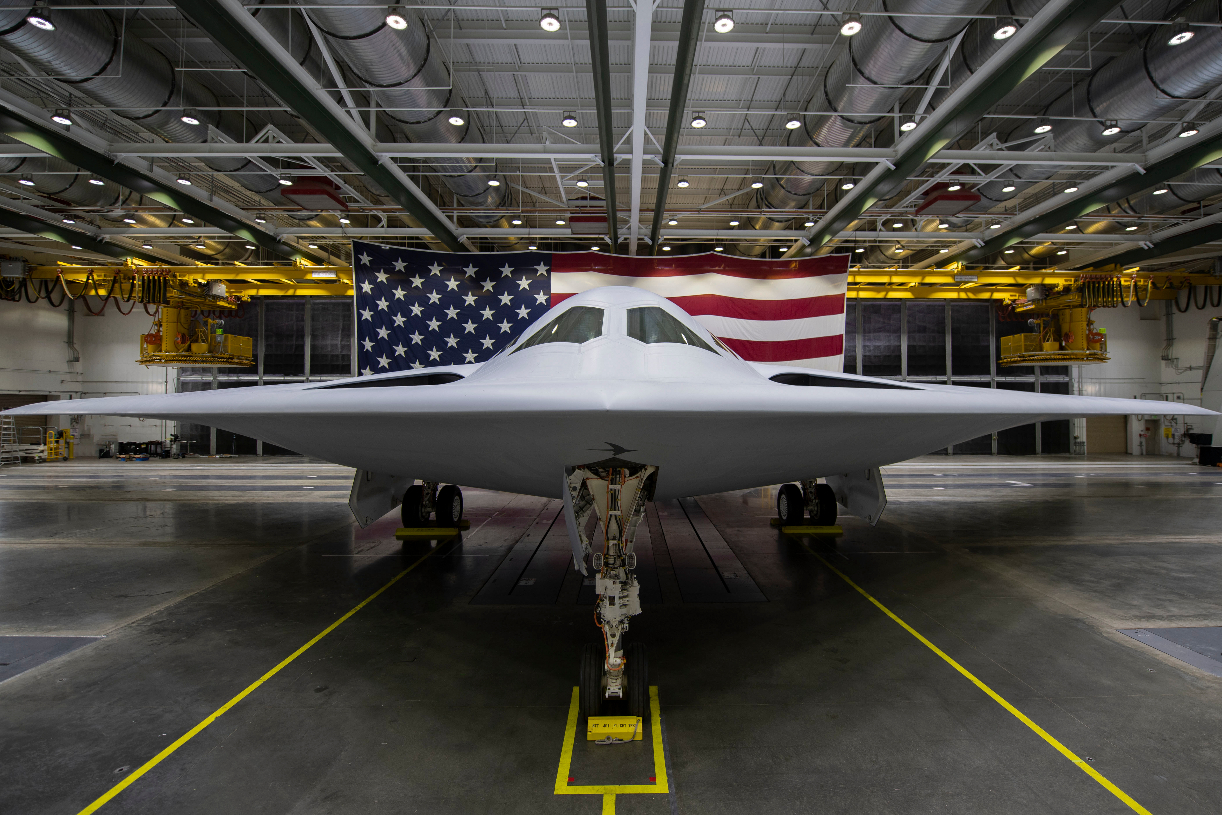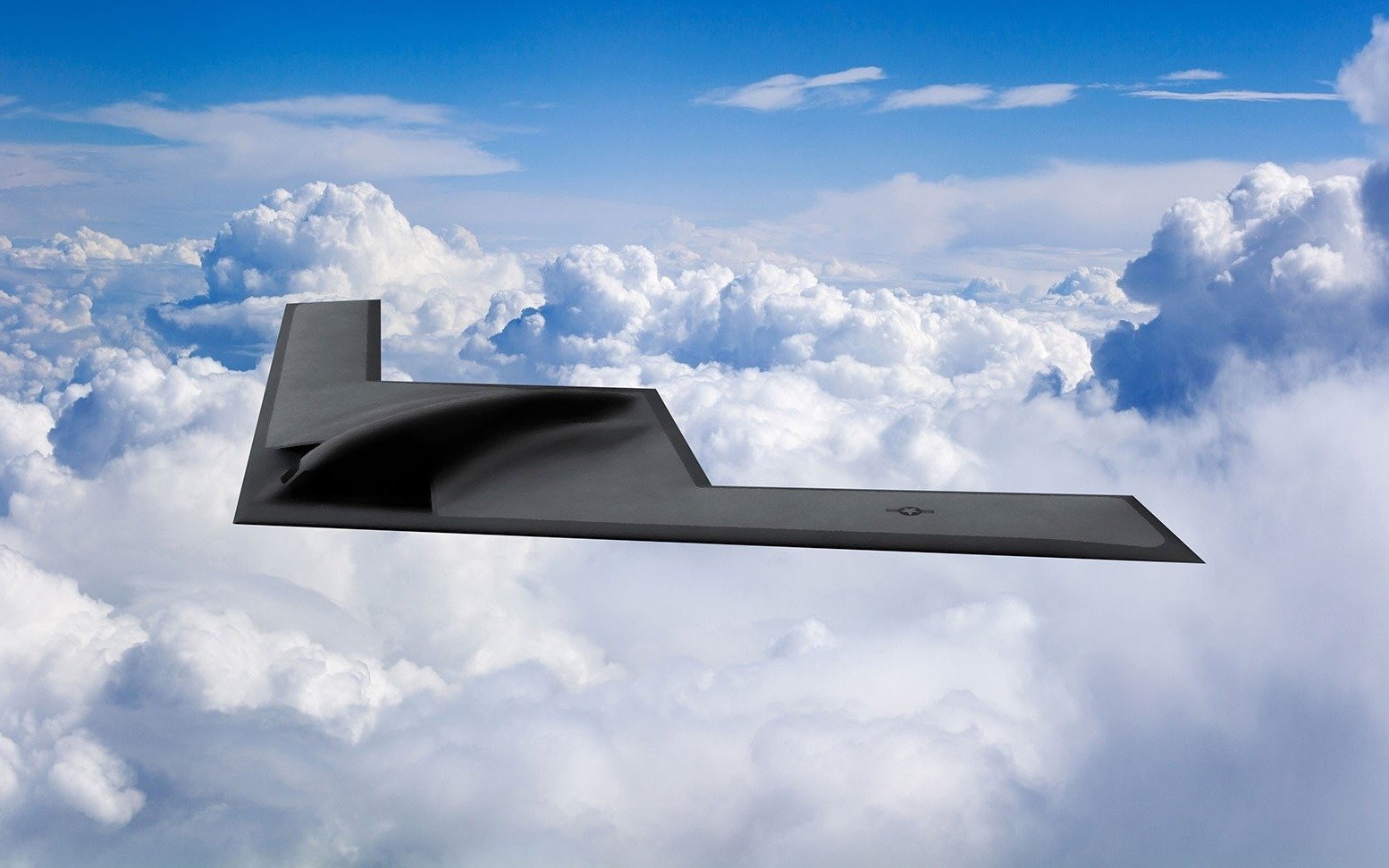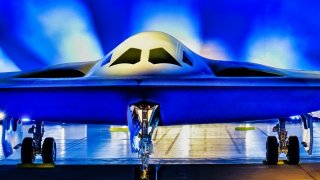The B-21 Raider Bomber Has 1 Serious Problem
The U.S. Air Force is pushing forward with the B-21 Raider, a long-range stealth bomber designed to replace the B-2 Spirit. Priced at around $700 million per unit, the Air Force faces financial challenges and has streamlined the acquisition process through its Rapid Capabilities Office.
What You Need to Know: The U.S. Air Force is pushing forward with the B-21 Raider, a long-range stealth bomber designed to replace the B-2 Spirit. Priced at around $700 million per unit, the Air Force faces financial challenges and has streamlined the acquisition process through its Rapid Capabilities Office.

-Despite aiming for 100 bombers, cost concerns have left Congress skeptical.
-With production now in the "Low Rate Initial Production" phase, the Air Force is working to prove the B-21’s worth.
-However, concerns linger about whether this ambitious project will achieve sufficient scale to be cost-effective in the long term. Indeed, cost is the B-21's biggest obstable.
The Race to Replace the B-2: Can the B-21 Raider Deliver?
The United States Air Force is seeking a new long-range stealth bomber to replace the iconic B-2 Spirit stealth bomber. They’ve settled on the B-21 Raider, which made its public debut last winter out of Edwards Air Force Base in California, where the legendary (and mysterious) Lockheed Martin Skunkworks is based. But the Air Force is facing a tough situation.
The air service cannot afford the high price tag—around $700 million per aircraft.
To streamline production, the Air Force has not used their normal acquisitions office to procure the innovative bomber. Instead, they handed off the job of acquiring these unique birds to the Air Force’s Rapid Capabilities Office, which is a bureaucracy meant to streamline the otherwise onerous acquisitions process (a sane person might ask why, instead of creating a bureaucracy to cut through bureaucracy, the government wouldn’t just reduce the bureaucratic bloat at the Pentagon’s acquisitions offices, but I digress).
The Air Force surely dreams of having 300 of these birds in their fleet but they say they’ll settle for 100. That’s still a steep price tag. On top of the flight test aircraft, the Air Force has built two additional B-21s for ground-based evaluations, proving just how committed to this platform they truly are.
And the Pentagon recently approved the B-21 for low-rate production. By conducting what’s known as “Low Rate Initial Production” (LRIP), the Air Force is hoping to prove to a skeptical Congress how useful this bird could be. The Pentagon making the manufacturing process of these complex birds streamlined, too, which would hopefully cut down on the overall costs of the program in the long run.
Why is the Pentagon Doing This?
The reason that the Air Force is doing this streamlined approach to the B-21 is because they believe they truly need this bird in a timely fashion. The Pentagon is trying to prove to a recalcitrant Congress that they can truly make this an affordable investment (unlike so many other major programs that the Air Force has built).

Sadly, this approach should have been employed with every major weapons platform the Air Force has attempted to procure over the last several decades. It was not. So, Congress, which is facing voters who are angry about the financial situation in this country, are increasingly disinclined to give the Air Force (or the other branches, for that matter) anymore wiggle room.
Plus, there’s no guarantee that the technological complexities of this bird will be mitigated by the use of the Air Force’s Rapid Capabilities Office.
At its most basic element, being able to reliably—and affordably—mass produce enough B-21 Raiders to make it a worthwhile investment in the long run, the defense industrial base of the United States obviously lacks the ability to meet current demands, let alone increased demands that come with a dynamic threat environment in which near-peer rivals are constantly jockeying for advantage over the United States militarily. If these birds cannot be reliably mass produced, then, they will never be worth the investment.
Where Does the Air Force Go?
Further, if past is indeed prologue, then the Air Force’s unfortunate experience with the B-2 Spirit long-range stealth bomber should inform the outcome of the even pricier B-21 Raider.
Just as with the B-21, the Air Force envisioned having hundreds of B-2 bombers at its disposal. After 30 years, it got 19—and these are now on their way out. That’s because they were far too expensive for the Air Force. With the B-21, the Pentagon will be lucky if it gets as many B-21 units as they did of the B-2.
Lack of adequate numbers of the B-2 was one of the key reasons that the Air Force wanted the B-21 to begin with. Now, they might not come close to getting adequate numbers of the B-21! The Air Force might need to start exploring radical alternatives for projection long-range stealth capabilities outside of the B-21.
Author Experience and Expertise: Brandon J. Weichert
Brandon J. Weichert, a National Interest national security analyst, is a former Congressional staffer and geopolitical analyst who is a contributor at The Washington Times, the Asia Times, and The-Pipeline. He is the author of Winning Space: How America Remains a Superpower, Biohacked: China’s Race to Control Life, and The Shadow War: Iran’s Quest for Supremacy. His next book, A Disaster of Our Own Making: How the West Lost Ukraine, is due October 22 from Encounter Books. Weichert can be followed via Twitter @WeTheBrandon.
All images are Creative Commons or Shutterstock.
From the Vault
Russia Freaked Out: Why the U.S. Navy 'Unretired' the Iowa-Class Battleships
Battleship vs. Battlecruiser: Iowa-Class vs. Russia's Kirov-Class (Who Wins?)


